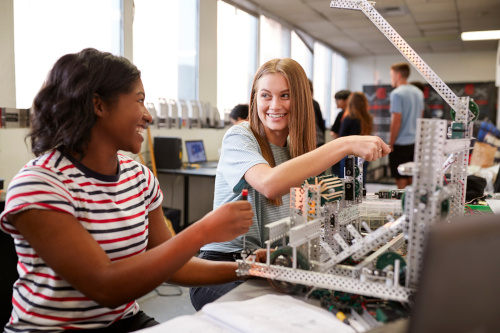STEAM education is critically important in the classroom, and engineering education is a key part of STEAM learning. And on World Engineering Day, the need for students to explore engineering and pursue it in college and the workforce has never been more apparent.
The 2020 Global Engineering Survey launched by DiscoverE, the organization responsible for World Engineering Day, found that 54 percent of respondents believe that there will be a shortage of engineers in the future, and a recent census survey found that only 27 percent of engineers are women.
Exposing students to the importance of engineering and giving them the skills required to be the problem solvers of tomorrow is crucial, but educators often don’t know how to integrate engineering concepts into their instruction. eSchool News connected with Lauren Harter, Senior Educational Developer for VEX Robotics, for some classroom engineering tips. Harter’s work in developing and bringing a series of educational robotic solutions, known as the VEX Continuum, to the classroom is aimed at helping to solve some of the world’s growing problems.
Here are some tips to integrate engineering into the classroom:
Elementary:
- Model problem solving, iteration, and persistence early and often. Providing students with opportunities to problem solve and try different strategies to find a solution is a great way for students to learn, grow, and develop a sense of agency in learning. The iterative process is at the core of STEM disciplines – especially engineering – and experiencing comfort with trying something, making a mistake, and learning from that mistake is something that students learn over time and need to practice. Teachers can model this for students by building coding projects together with students, or intentionally making a mistake during a demonstration so that students can see that persistence and problem solving are an expected part of engineering and learning. Seeing and hearing a variety of solutions to the same problem can also support students’ tolerance for others’ ideas, and contribute to a more collaborative classroom culture in STEM and beyond.

:max_bytes(150000):strip_icc()/Health-GettyImages-1306283405-d623bde38d0a4be9814820cb265fc730.jpg)



